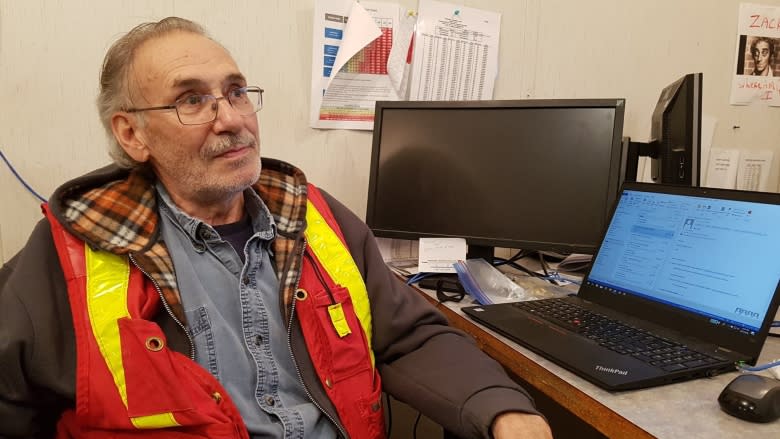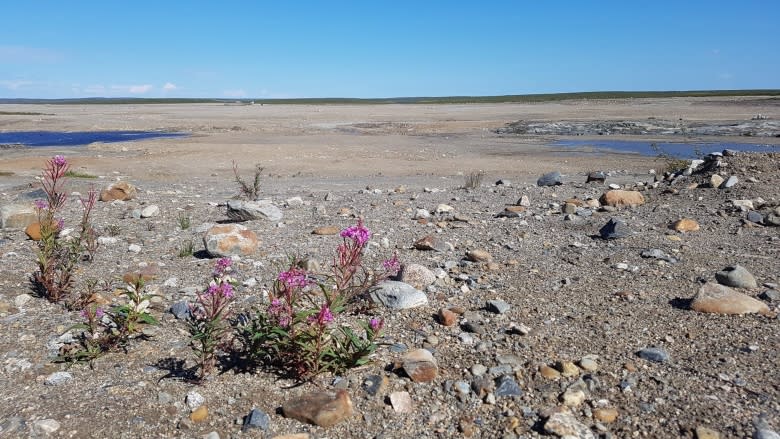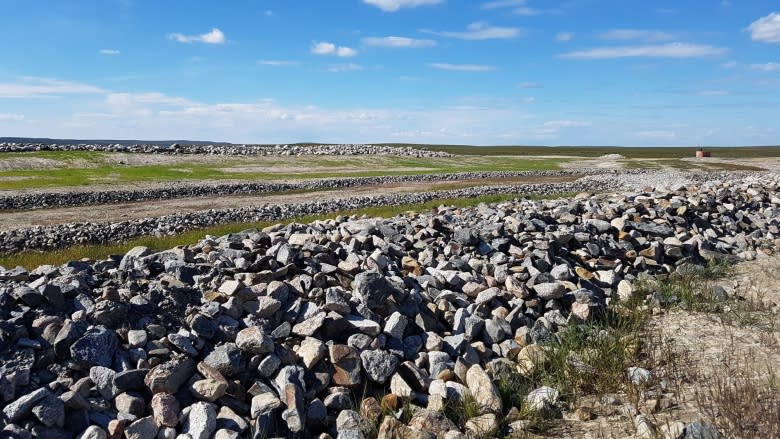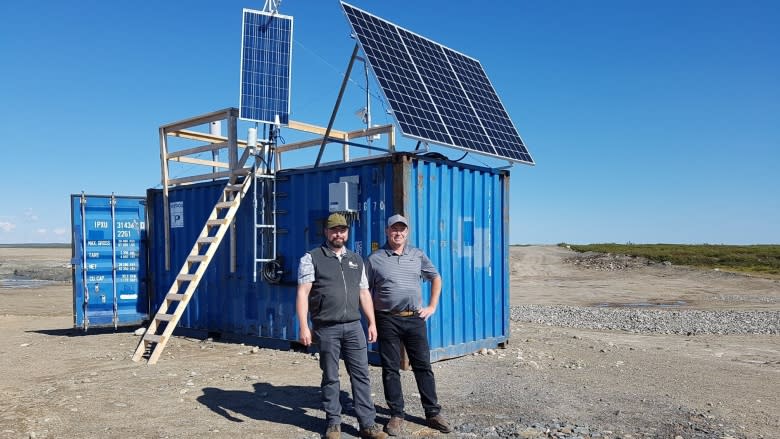Feds, northerners celebrate clean-up of Tundra Mine in N.W.T.
The Canadian government is celebrating the clean-up of Tundra Mine, a site it has been working on since 2007. Though the federal government still has to monitor the site, it has finished the bulk of the remediation.
The mine is located about 240 kilometres northeast of Yellowknife near Courageous Lake. It was first staked in 1945, and from 1964-1968 Tundra Gold Mines Limited was in charge of the operation.
In 1992, Royal Oak Mines bought the site. Seven years later it went into receivership and the site was reverted to the Crown. The federal government has since been responsible for the care and maintenance of the site.
- FROM 2015 | Companies walked away from N.W.T.'s Tundra mine with gov't consent
The Canadian government has spent $100 million cleaning up the site since the 2008 fiscal year.
It flew out about 20 representatives from the territorial government, Yellowknives Dene First Nation, North Slave Métis Alliance, and the Tlicho government to attend the celebration at the mine site on Friday.
"I'm so happy with the way this project went this last year," said Ford Tucker, the manager overseeing the project on behalf of the Delta Engineering and Nahanni Construction joint venture.
"We just had the best workers you could find anywhere… It was just amazing. I can't describe how good I feel."
Tucker said the work had its difficulties.
"We're surrounded by six lakes we've got to protect… And we've done that. We're very proud of that."
He also said there were no injuries during the year the venture has had the contract. The project is now down to a handful of employees, but last year there were 54 people working at the site.
The crew worked over the last year to cover up the tailings leftover from the mine, Tucker said. The tailings, rich in arsenic, are now capped and underground, with a footprint equivalent to about 53 football fields.
'It's a start'
Ted Tsetta, a representative with the Yellowknives Dene First Nation, helped plant willows and other local species at the site. Now he said he's going to take the knowledge he gained through the remediation and bring it back to the First Nation.
"I think it's important for this land to heal itself because the past destruction was harsh and if [remediation] was done maybe 20 years ago, maybe things would have been different, but it's a start," said Tsetta.
The site was revegetated using a technique called "rough and loose". It works by taking a backhoe and lifting up piles of dirt to loosen the ground to create pockets for plants and seeds to take root.
Tsetta said he thinks this will help speed up regrowth.
"This will have to be shared back with our members in Yellowknife, because we've got so many abandoned mines," he said.
"We've got to get the ball rolling and see if there's any changes in how vegetating is working. Hopefully it will."
Water flow re-established after 60 years
According to Tundra Mine Remediation project manager for Crown-Indigenous and Northern Affairs Canada, Joel Gowman, they have treated 720 Olympic swimming pools worth of water contaminated by the tailings.
The cap on the tailings now diverts the water flow to prevent further water contamination.
Gowman said diverting the water flow comes down to two principles: "keeping clean water clean and re-establishing natural drainage."
In June, water flow was re-established between Mill Pond and Hambone Lake for the first time in 60 years.
"It was a pretty big milestone to see the reconnection of the two water bodies," said Gowman.
The project is now in the "adaptive management" phase, according to Gowman. This means over the next five years the site will get more in-depth monitoring. Gowman said this will include looking at the water quality and testing for metals: arsenic, nickel, copper, and zinc.
They will also be looking at how much sediment is running off into the surrounding lakes as well as making on-site visits once a month.
After the adaptive management phase, the project will move into long-term monitoring.
In 2019 the remaining equipment will be flown out of the site, including the camp.
Gowman said they don't yet know what the annual monitoring costs will be.







